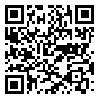BibTeX | RIS | EndNote | Medlars | ProCite | Reference Manager | RefWorks
Send citation to:
URL: http://ijme.mui.ac.ir/article-1-5770-en.html
Introduction: This study investigates the impact of reflective thinking and competency-based training on hidden anxiety in operating room students. In fact, this study aimed to investigate educational approaches as tools to improve clinical performance and also help manage hidden anxiety.
Methods: This research was conducted with a rigorous semi-experimental design and a pre-test-post-test method, ensuring the thoroughness of our approach. The study involved 50 undergraduate surgical technology students at Hamedan University of Medical Sciences in 2024. Data was collected using Spielberger's Demographic Information and Anxiety Questionnaire. The participants were randomly assigned to two groups, one receiving training based on reflective thinking and the other on competence, each with 25 individuals. The data was analyzed using the widely accepted software SPSS (Version 19).
Results: The results showed that the latent anxiety scores before (25.32±0.585) and after (24.44±2.36) training based on reflective thinking had no statistically significant difference (P> 0.5) in the training group. Based on competence thinking, there was no statistically significant difference between the mean hidden anxiety scores before (25.44±5.54) and after (24.00±2.00) training (P> 0.5). In comparing the two groups of training based on reflective thinking and training based on competence thinking, there was no statistically significant difference in the amount of hidden anxiety between the two groups (P> 0.5).
Conclusion: The results of this study showed that training based on reflective thinking and training based on competence do not affect the level of hidden anxiety of operating room technology students. It is suggested that in future studies, a more detailed examination of the factors affecting hidden anxiety, the use of combined educational methods, and a long-term evaluation of their impact should be planned.
Received: 2024/05/3 | Accepted: 2024/09/22 | Published: 2024/05/30 | ePublished: 2024/05/30
| Rights and permissions | |
 |
This work is licensed under a Creative Commons Attribution-NonCommercial 4.0 International License. |






